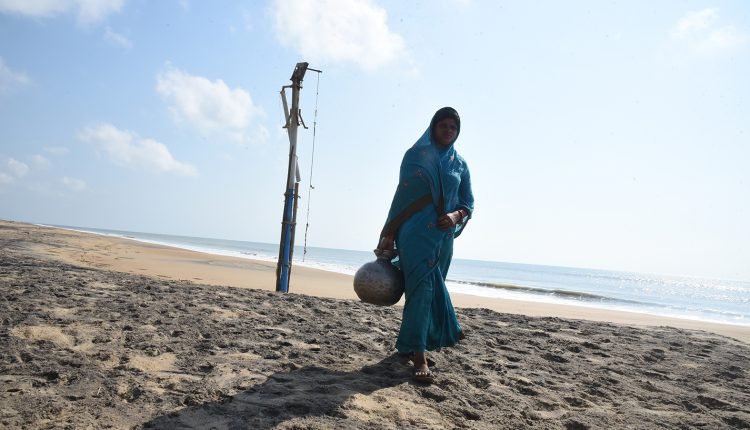Villages that went into the sea
Once upon a time, there were seven villages that dotted the coast of Odisha’s Kendrapara district. The robust economy of the villages was based on agriculture and fishing.

The collective area of the villages was known as Satabhaya. In Odia, ‘sata’ means seven and ‘bhaya’ means brother.
But then, in the 1940s, the sea surged forward towards the coast causing soil erosion. Over the next four decades, the villages went down the sea one by one. Kanhupur was the last village to be gobbled up by the sea in 2011.

Around 600 houses, more than 2,400 acres of cropland, several temples, a 125-year-old high school and a summer palace of a royal family were lost forever.
Experts attributed the loss of the villages to climate change triggered coastal erosion. Many of them also suspected that development projects like construction of Paradip Port and destruction of coastal ecology in the 1960s might have accelerated the erosion.

As the villages got lost in the sea, people kept relocating themselves to safer places inwards, creating five villages with Satabhaya as the gram panchayat. Satabhaya also became a metaphor to identify the area; the people living there became Odisha’s first climate change refugees.
But the sea kept encroaching into the newly formed villages too, again threatening the people’s lives and livelihoods. Realising the threat of the sea erosion and climate change, the Odisha government decided to urgently relocate the villagers in another, safer, place.

In 2002, chief minister Naveen Patnaik laid the foundation stone for a rehabilitation colony in an area of 100 acres at Bagapatia, around 13 km from the coast. However, the land acquisition process started only after eight years.
Though the majority of the population were finally shifted to Bagapatia by 2017, they kept coming back to Satabhaya as they depended on it for their livelihoods – fishing and the livestock that they kept there.

Now, Satabhaya remains deserted. Salinity has seeped into the land and vegetation; the area is not suitable even for the livestock as the grass for grazing has also turned saline.
Photographs taken between 2010 and 2018 clearly reflect the changes in Satabhaya area. An excellent indicator of the soil erosion and climate in Satabhaya is Panchubarahi Temple, abode of the villages’ five presiding deities.

According to older villagers, the royal palace got submerged in the sea in 1948. At that time, the palace was more than a kilometre away from the temple. In 2018, the distance between the temple and the beach was less than 50 metres while tube wells and demolished foundations of many houses washed away by the waves were spotted at the beach.
As the deities have now been relocated to their new abode in Bagapatia, the old temple now lies abandoned to silently witness to the changes in climate for a few years more before getting sucked into the sea.




Comments are closed.